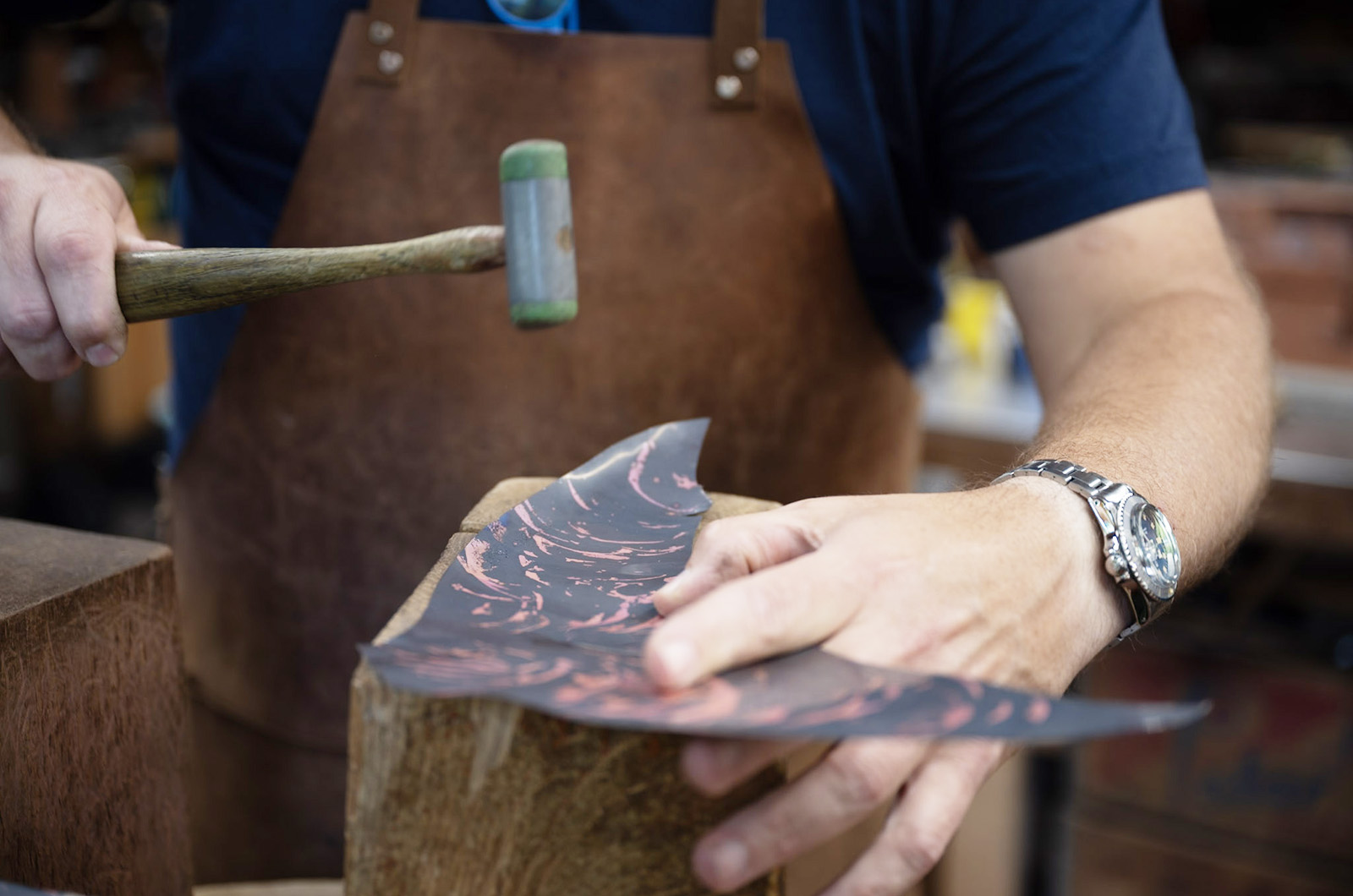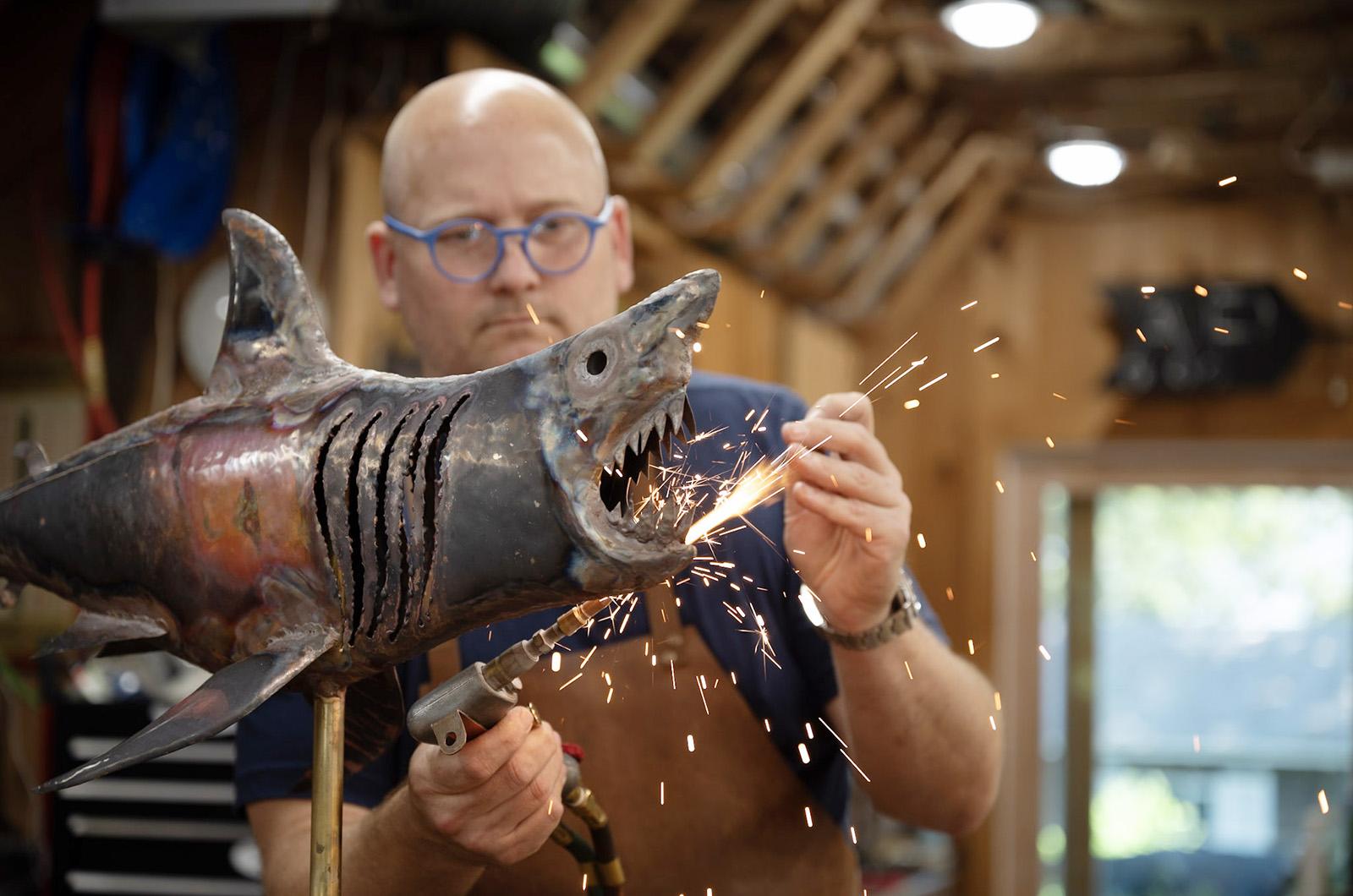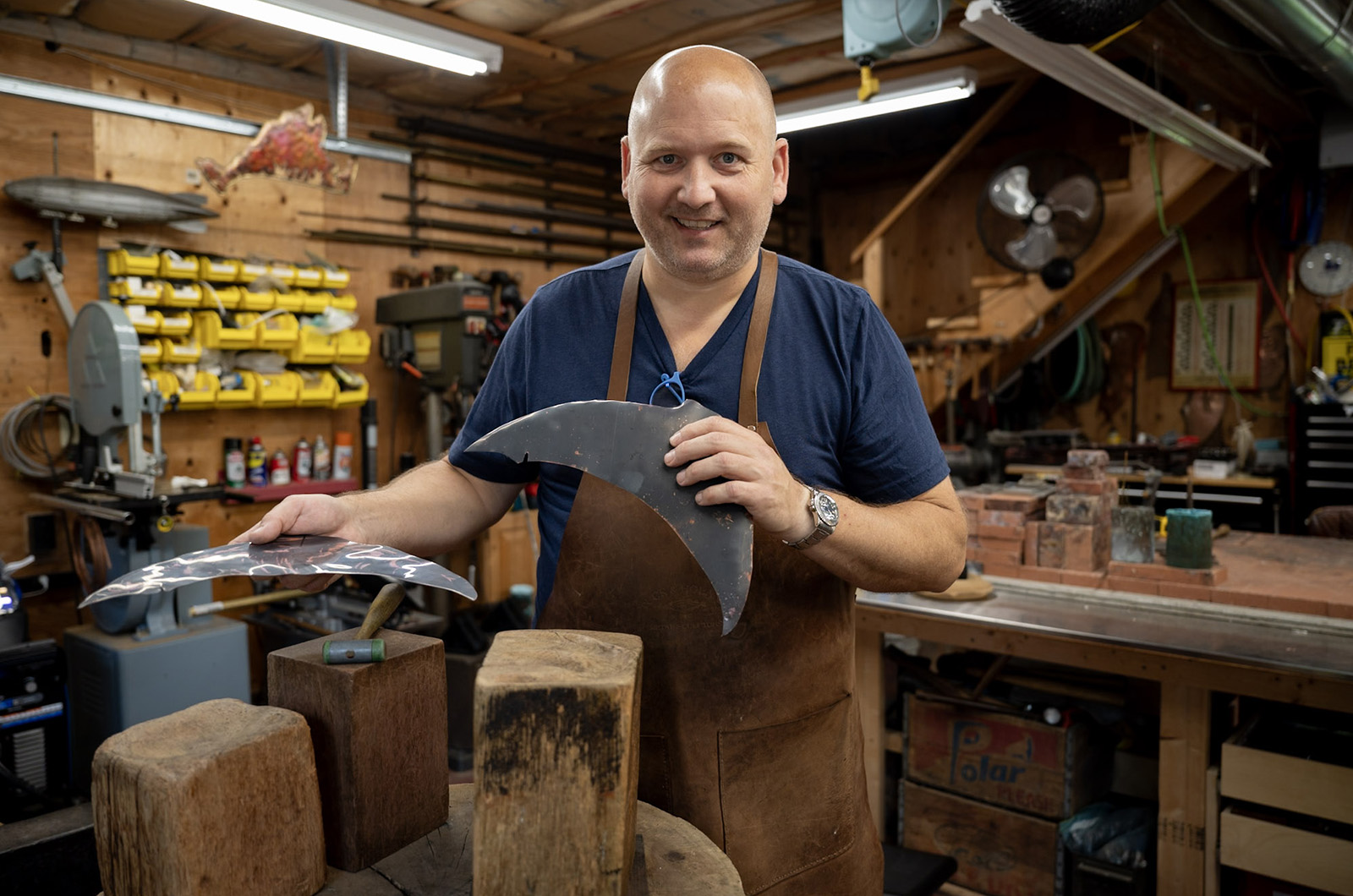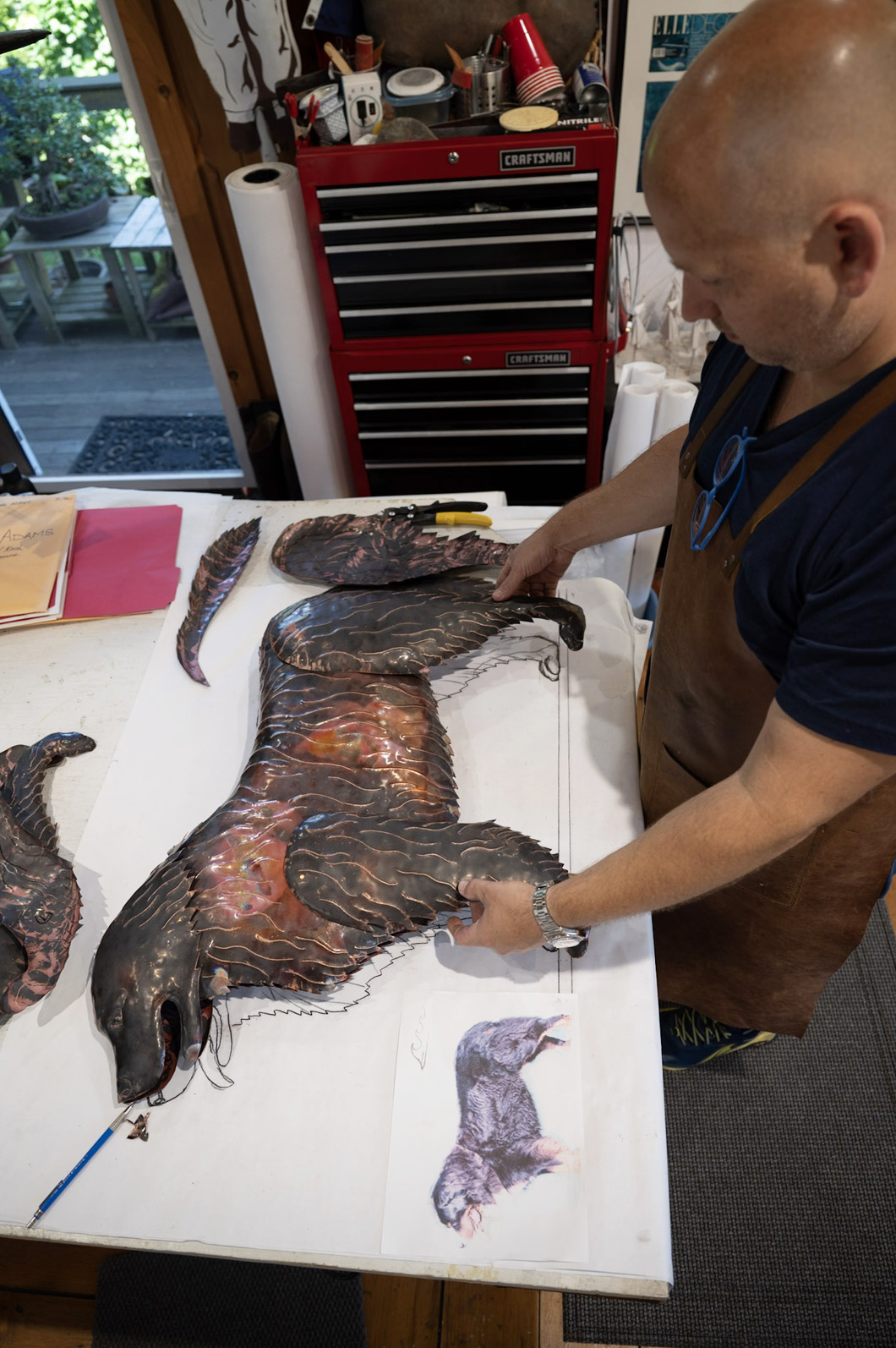Anthony Holand wields a hammer in his Vineyard Haven studio as he works on a commemorative weathervane for the 50th anniversary of the filming of Jaws. The sound of copper clanging rings out as he repeatedly brings the hammer down on a chisel, slowly moving down the shape of a shark.
“Each hammer blow is a unique decision in making a piece,” he says as he works towards the end of the body where he will eventually add the back fin.
When he reaches the end, he turns the metal over to reveal a thin ridge running along the shark’s back.
Mr. Holand is creating three shark weathervanes for the anniversary, each one based on the weathervane made 50 years ago for the film by Travis Tuck, Mr. Holand’s mentor.
Mr. Tuck’s weathervane can be seen in the movie on top of Quint’s shack. The concept drawing by Joe Alves, the movie’s production designer, still hangs today on the back wall of Tuck & Holand Metal Sculptors.
Mr. Holand met Mr. Tuck in 1997 while visiting the Island with college friends. Throughout school, he took as many art classes as possible, although he graduated with a business degree because his mother insisted he would need a real job after college.
“There was an ad for an apprentice metal sculptor of all things,” Mr. Holand said. “I didn’t want to go back to Washington. I wasn’t quite sure what I was going to do, but out of about 20 people, I got the job.”
As an apprentice, Mr. Holand learned a variety of techniques that have become integral to his work today, including repoussé — where an artist hammers the reverse side of a piece to create a relief. Once each individual piece of a weathervane has been hammered into shape, Mr. Holand brazes them together. He uses a phosphorus copper brazing rod, which melts a filler metal into the joints.
“It’s a much better bond than a solder,” he said. “With the brazing rod with the torch, you can actually take and build up the metal. You can see it on the [shark’s] teeth.”
Mr. Holand uses the build-up to add further details on a piece as well as fixing components together. On the weathervane of Sam Adams, showcased just inside the studio’s front door, the froth on his tankard of beer is built from a melted rod.

Once all the pieces are put together, whether it be shark or a drinking founding father, Mr. Holand moves on to the gilding process.
The three sharks will be gilded in gold leaf because the metal signifies 50 years. Mr. Holand also uses palladium and platinum to gild his work. He starts by cleaning the copper and adding a primer and red enamel paint. Then he puts on sizing, which is similar to a varnish and lets it sit overnight.
“You have about a four-hour window when it comes to tack, so it’s just slightly tacky,” he said. “That’s what the gold adheres to, so you float it over with a squirrel hairbrush.”
Mr. Holand decides which parts of a design will be gilded based on how a weathervane will change as it ages.
“[Gold leaf] is really nice as a detail because as the copper patinas, the gold really pops and has it all make sense.”
Mr. Holand builds his weathervanes to last. He creates a more intense structure underneath bigger pieces and uses materials that will be resistant to rain and wind. He designs each piece with more surface area in the rear so it reacts to the wind properly.
“There were some four-foot bears I did for this big house in Winnipesaukee and I know they get winds, so that was a concern. So I structurally made them a tank inside and it’s been no issue.”
For custom weathervanes — which make up the majority of Mr. Holand’s work — the best designs tell a story.
“You’re sitting down with a client and figuring out the how’s and why’s and those little special tidbits,” Mr. Holand said.
Even for customers who come to Mr. Holand knowing exactly what they want, ideas tend to change. Part of that is because there is a nearly three-year waiting list for customers.
“I tell them to keep a folder, email me any ideas,” he said. “About a month out from starting is the time where we put all those ideas together and throw them on the table.”
Once Mr. Holand gets a design approved, he photoshops it on top of the house where the weathervane will stand to give his clients an idea of the scale. From there, he makes a paper pattern.
“It’s a lot like making a garment,” he said. “You need to add your additional seams to each piece.”
Mr. Holand cuts the pattern pieces from copper and begins to hammer out the design of his next weathervane. The sound echoes throughout the studio and out the door, calling out to anyone interested to come by and watch him work.
“Taking people through the process, that’s the really fun part,” Mr. Holand said. “Sharing this whole thing, and people understand it’s just not off the shelf.”









Comments (3)
Comments
Comment policy »